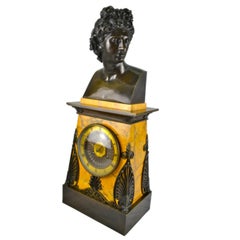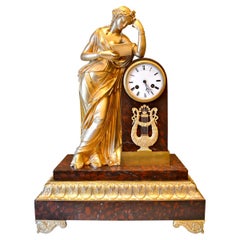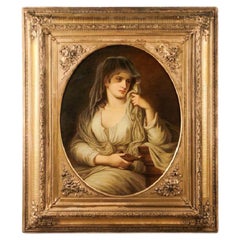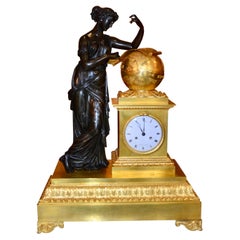About Three Centuries Shop
For 35 years, the Three Centuries Shop has been providing fine antique furniture and decorative arts. It caters to a variety of discerning clients, collectors, dealers and decorators. This antique store first opened in 1981 in Davenport Road, Toronto, Ontario. In 2003, it relocated to its current home in Vancouver, near Granville Island. The Three Centuries Shop is an antique store that specializes specifically in the collection of French antique furniture from the 18th and 19th centuries. It also carries some Chinese antique items such as clocks and lamps. With its gro...Read More
Featured Pieces
Empire Bronze and Sienna Marble Clock with a bust of Apollo Belvedere
Located in Vancouver, British Columbia
A fine example of a French Empire period mantle clock, circa 1830. The rectangular stepped case is made of yellow Sienna marble and is decorated on the top and bottom with patinated ...
Category
Antique Early 19th Century French Empire Mantel Clocks
Materials
Siena Marble, Bronze
Allegorical French Louis Philippe Clock of Clio the Greek Muse of History
Located in Vancouver, British Columbia
A French Louis Philippe allegorical gilt bronze and marble mantle clock depicting Clio, The Greek Muse of History. The standing figure of a gilded Clio is ...
Category
Antique Mid-19th Century French Louis Philippe Mantel Clocks
Materials
Bronze
Tuccia the Vestal Virgin Holding a Lamp After Angelica Kauffman
By Friedrich Hofelder
Located in Vancouver, British Columbia
An oil painting on canvas showing a portrait of a classical maiden depicted as a vestal virgin dressed in classical attire, having chestnut hair concealed by a guarnello or thin veil and holding a Roman oil lamp.
The painting signed “F. Hofelder" on the lower right of the canvas was executed circa 1873 almost 100 years after the original by the late 18 Century neoclassical Swiss artist Angelika Kauffman. The virtually unknown Polish artist is likely to have copied the original painting hanging at the Gemäldegalerie Alte Meister (Old Masters Picture Gallery) in the Staatliche Kunstsammlungen, Dresden, Germany.
The Swiss-born artist Angelica Kauffman...
Category
Antique Late 19th Century German Neoclassical Revival Paintings
Materials
Canvas
French Empire Bronze Clock Depicting Urania Greek Muse of Astronomy
By Lesieur
Located in Vancouver, British Columbia
A magnificent large gilded and patinated bronze period French Empire mantle clock depicting Urania the Greek Muse of Astronomy standing on a stepped rectangular gilded bronze base h...
Category
Antique Early 19th Century French Empire Mantel Clocks
Materials
Bronze
"Lovers in the Park” by German/French Artist Ferdinand Heilbuth
By Ferdinand Heilbuth
Located in Vancouver, British Columbia
A Classic romantic movement oil painting on wood panel depicting two lovers. They are dressed in Renaissance almost theatrical garments and they sit intimately close to one another on a bench. The atmospheric background is set in the middle of a wooded park in the early evening hours before dusk. Their faces are almost in shadow as the brilliant orange/red sun sets behind them. The painting is signed F. Heilbuth on the right hand bottom corner of the canvas and is dated ’76 in reference to 1876. It is set in a gold painted wood frame.
Biography
Ferdinand Heilbuth, (1826-1889), was a German-born French painter. He was born in Hamburg in 1826, and died in Paris in 1889 having become a French citizen in 1876, the same year he painted this work. He is buried in Père-Lachaise cemetery in Paris.
This genre painter whose talent has the characteristics of nobility, liveliness of color and accent in expression, exhibited many times at the Royal Academy in London. His works were also shown in the Grosvenor Gallery...
Category
Antique Late 19th Century French Romantic Paintings
Materials
Canvas
18th Century French Louis XV Boulle and Gilt Bronze Bracket Clock
By André-Charles Boulle
Located in Vancouver, British Columbia
A Period Louis XV Boulle mantle clock The case is inlaid with brass and is further decorated with Rococo scrollwork and gilded bronze mounts. The det...
Category
Antique Late 18th Century French Louis XV Mantel Clocks
Materials
Bronze
Pair of 18 Century Paintings of St Francis Xavier and St Carlo Borromeo
Located in Vancouver, British Columbia
A beautifully executed and rare complementary pair of oil on canvas paintings depicting two of the moist famous and important counter reformation catholic saints St Francis Xavier and St Carlo Borromeo shown in scenes of what the respective saints are mostly famous for. St Francis Xavier for the conversion to Christianity of many S. E Asian countries notably India and St Carlo Borromeo shown asking the Virgin Mary to intercede for the cessation of the terrible plague of 1576. The paintings are presented in refreshed gilded carved wooden frames and are unsigned.
St. Francis Xavier was born in Spanish Navarre in 1506 and in 1528, he met St. Ignatius of Loyola. He became one of the seven in 1534 who founded the Society of Jesus (Jesuit Order). In 1536, he left the University of Paris and joined St. Ignatius in Venice. He was ordained in 1537, and in 1540 after the Society was recognized by the Pope, he journeyed to the Far East. Francis Xavier first evangelized the Portuguese colony of Goa in India, then Travancore, Ceylon, Malacca, and the surrounding islands. From there he journeyed to Japan, where he gave Christianity such deep roots that it survived centuries of violent persecution. He died on Sancian Island in 1552, while he was seeking to penetrate into the great forbidden land of China.
Despite language problems, lack of funds, resistance from the Europeans as well as the natives, he persevered. St. Francis converted more people in his life than anyone since the Apostle St. Paul. He baptized over 3 million people, converted the entire town of Goa in India, and he labored in India, Pakistan, Bangladesh, Sri Lanka, Malaysia, Indonesia, Singapore, and Japan. He was truly a missionary par excellence.
St Carlo Borromeo (1538-1584), was a Cardinal of the Holy Roman Catholic Church and Archbishop of Milan from 1565 to 1583. He was described in the decree for his canonization, as “a man, even while the world smiles on him with the utmost flattery, he lives crucified to the world, spiritually, trampling earthly things, seeking continuously the things of heaven, emulating the life of the Angels on earth, in his thoughts and actions.
The plague began in the month of August that year. Milan was celebrating joyfully the arrival of Don John of Austria, on his way to Flanders, where he had been appointed governor. The city authorities were abuzz with excitement in their desire to bestow the highest honours on the Spanish prince, but Charles, who had been Archbishop of the diocese for six years, was following with concern the news coming from Trento, Verona and Mantua, where the plague had begun claiming victims. The first cases exploded in Milan on August 11th, right at the moment when Don John of Austria arrived. The victor of Lepanto, followed by the governor, Antonio de Guzmán y Zuñiga, departed the city, while Carlo Borromeo, who was in Lodi for the Bishop’s funeral, returned in haste.
Confusion and fear reigned in Milan and the Archbishop dedicated himself completely to assisting the sick and ordering public and private prayers. Dom Prosper Guéranger sums up his infinite charity in this way: “In the absence of local authorities, he organized the health service, founded or renewed hospitals, sought money and provisions, decreed preventive measures. Most importantly though, he took steps to ensure spiritual help, assistance to the sick and the burial of the dead. Unafraid of being infected, he paid in person, by visiting hospitals, leading penitential processions, being everything to everyone, like a father and true shepherd”
St. Carlo was convinced that the epidemic was “a scourge sent by Heaven” as chastisement for the sins of the people and that recourse to spiritual measures was necessary to fight against it: prayer and penitence. He rebuked the civil authorities for having placed their trust in human measures rather than divine ones. “Hadn’t they prohibited all the pious gatherings and processions during the time of the Jubilee? For him, and he was convinced of it, these were the causes of the chastisement. The magistrates who governed the city continued to oppose public ceremonies, out of fear that the large gathering of people would spread contagion, but Charles “who was guided by the Divine Spirit” – recounts another biographer – convinced them by citing various examples, among which was the one regarding St. Gregory the Great who had halted the plague devastating Rome in 590.
While the pestilence spread, the Archbishop then ordered three general processions to take place in Milan on the 3rd, 5th and 6th of October, “to placate the wrath of God”. On the first day, the Saint, despite it not being the Lenten season, placed ashes on the heads of the thousands gathered, exhorting them to penitence. Once the ceremony was over, the procession went to the Basilica of St. Ambrose. Charles put himself at the head of the people, dressed in a hooded purple robe, barefoot, penitential cord at his neck and large cross in his hand.
The second procession led by the Cardinal headed towards the Basilica of San Lorenzo. The third day the procession from the Duomo headed for the Basilica of Santa Maria at San Celso. St. Carlo carried in his hands a relique of Our Lord’s Holy Nail, which had been given by the Emperor Theodosius to St. Ambrose in the 5th century.
The plague didn’t show any signs of waning and Milan appeared depopulated, as a third of its citizens had lost their lives and the others were in quarantine or didn’t dare leave their homes. The Archbishop ordered about twenty stone columns with a cross at the top to be erected in the main squares and city crossroads, allowing the inhabitants from every quarter to take part in the Masses and public prayers - from the windows of their homes. One of Milan’s protectors was St. Sebastian, the martyr the Romans had recourse to during the plague in 672. St. Charles suggested that the magistrates of Milan reconstruct the sanctuary dedicated to him, which was falling into ruins, and to celebrate a solemn feast in his honour for ten years. Finally in July 1577, the plague ceased and in September the founding stone was laid in the civic temple of St. Sebastian, where on January 20th every year, even today a Mass is offered to recall the end of the scourge.
St.Carlo Borromeo died on November 3rd 1584 and was buried in the Duomo of Milan. His heart was solemnly translated to Rome, in the Basilica of Saints Ambrose...
Category
Antique Late 18th Century French Baroque Paintings
Materials
Canvas
Pair of French Empire Mahogany and Gilt Bronze Mounted Armchairs
Located in Vancouver, British Columbia
A striking pair of late French Empire mahogany armchairs, highly decorated with gilded bronze mounts on the upper back rail and all round the bottom of the seat as well. The curved open front arms terminate in carved dolphins. The chairs have been re-upholsterd in a cream and dark green striped antique silk fabric...
Category
Antique Mid-19th Century French Empire Armchairs
Materials
Silk, Mahogany
Period French Directoire Mahogany Cannape in Gold Empire Silk Fabric
By Adam Jacob
Located in Vancouver, British Columbia
A Classic Directoire mahogany cannape with lion's head arm supports and paw feet, accented by Empire ormolu mounts and upholstered in gold Empire style silk yellow fabric.
Category
Antique Early 19th Century French Directoire Canapes
Materials
Mahogany
Grand Tour Bronze of the Equestrian Statue of Colleoni After Verrocchio
By Andrea del Verrocchio
Located in Vancouver, British Columbia
A very finely cast late 19 century Grand Tour bronze replica of the renowned statue of Bartolomeo Colleoni on horseback set on a verde antico marble base after the life sized bronze statue by the Renaissance sculptor Andrea Del Verrocchio...
Category
Antique Late 19th Century Italian Renaissance Animal Sculptures
Materials
Bronze
19thC Engraving of Mozart Playing for Hapsburg Emperor Francis 1
Located in Vancouver, British Columbia
A 19th century engraving of a young Mozart playing the harpsichord in the court of Hapsburg Emperor Francis I featuring the Emperor and a number of courtesans and members of the Haps...
Category
Antique Late 19th Century European Louis XV Prints
Materials
Giltwood, Paper
Man of the Sandwich Islands, with His Helmet J. Webber del. J.K. Sherwin Sc.
By John Webber
Located in Vancouver, British Columbia
An English 18 century engraving titled "Man of the Sandwich Islands, with his helmet " signed .J. Webber del. J.K. Sherwin sc. The subject was sketched in the 1770s by J.K Sherwin S,...
Category
Antique Late 18th Century English British Colonial Prints
Materials
Paper
More About Three Centuries Shop

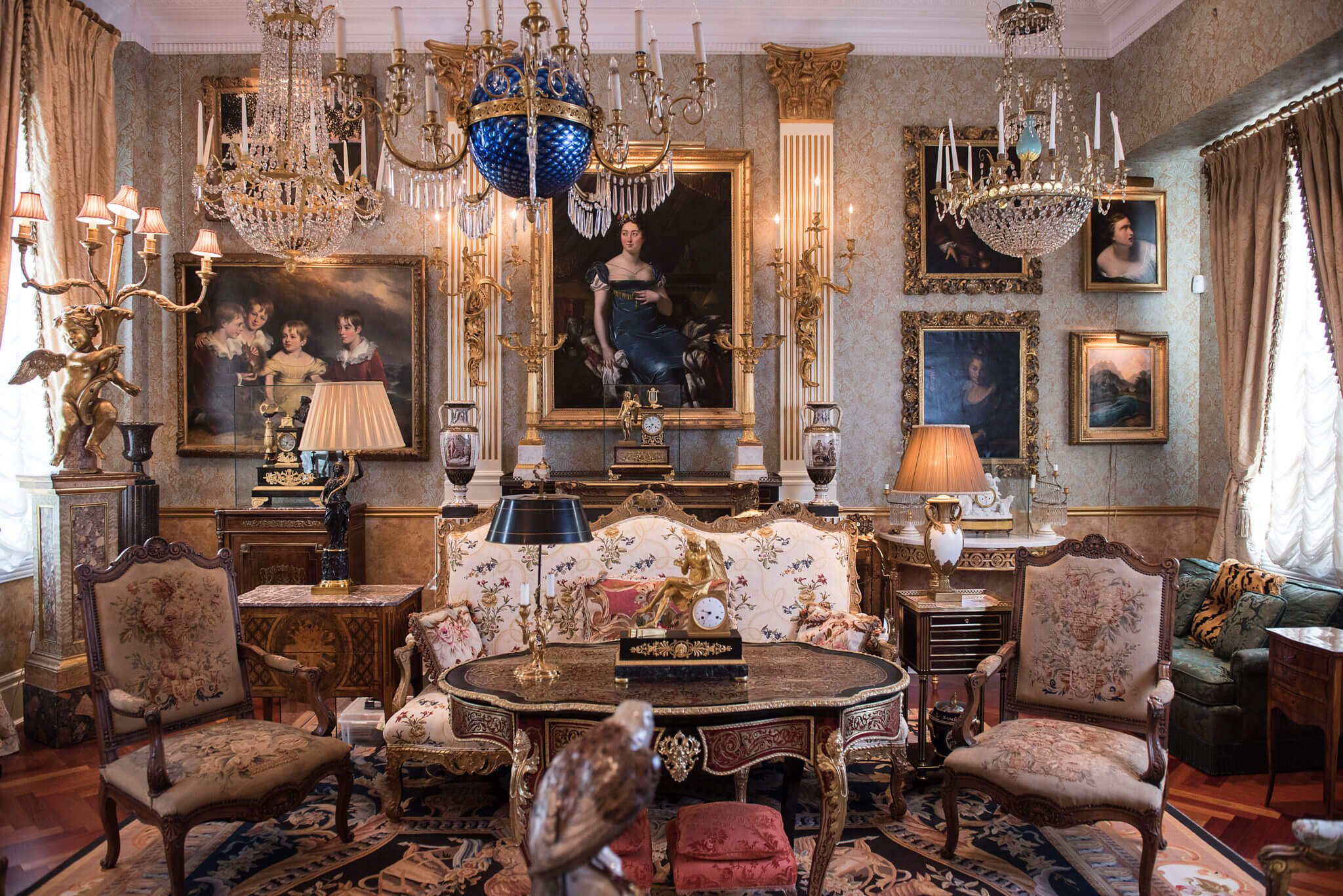
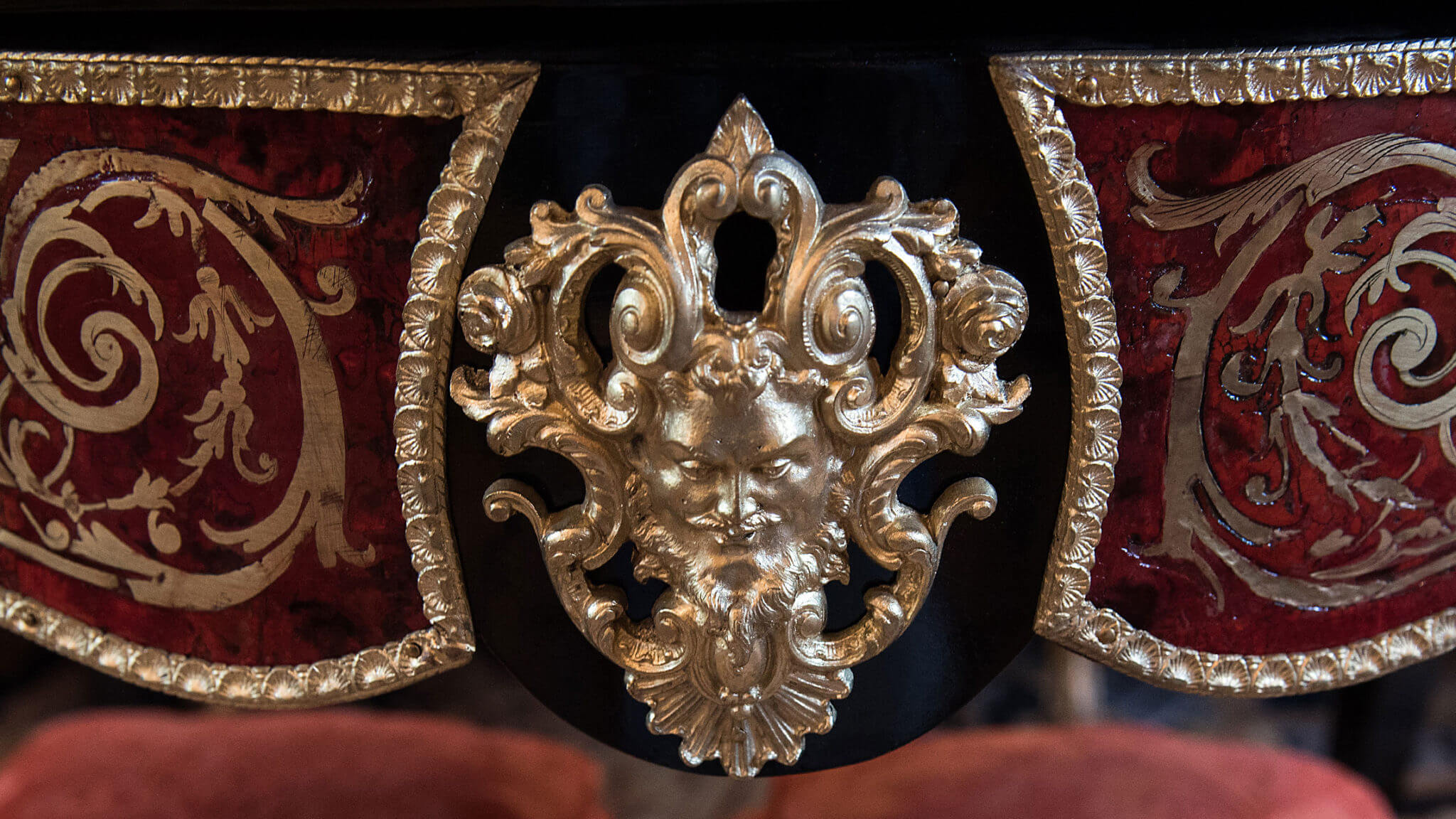


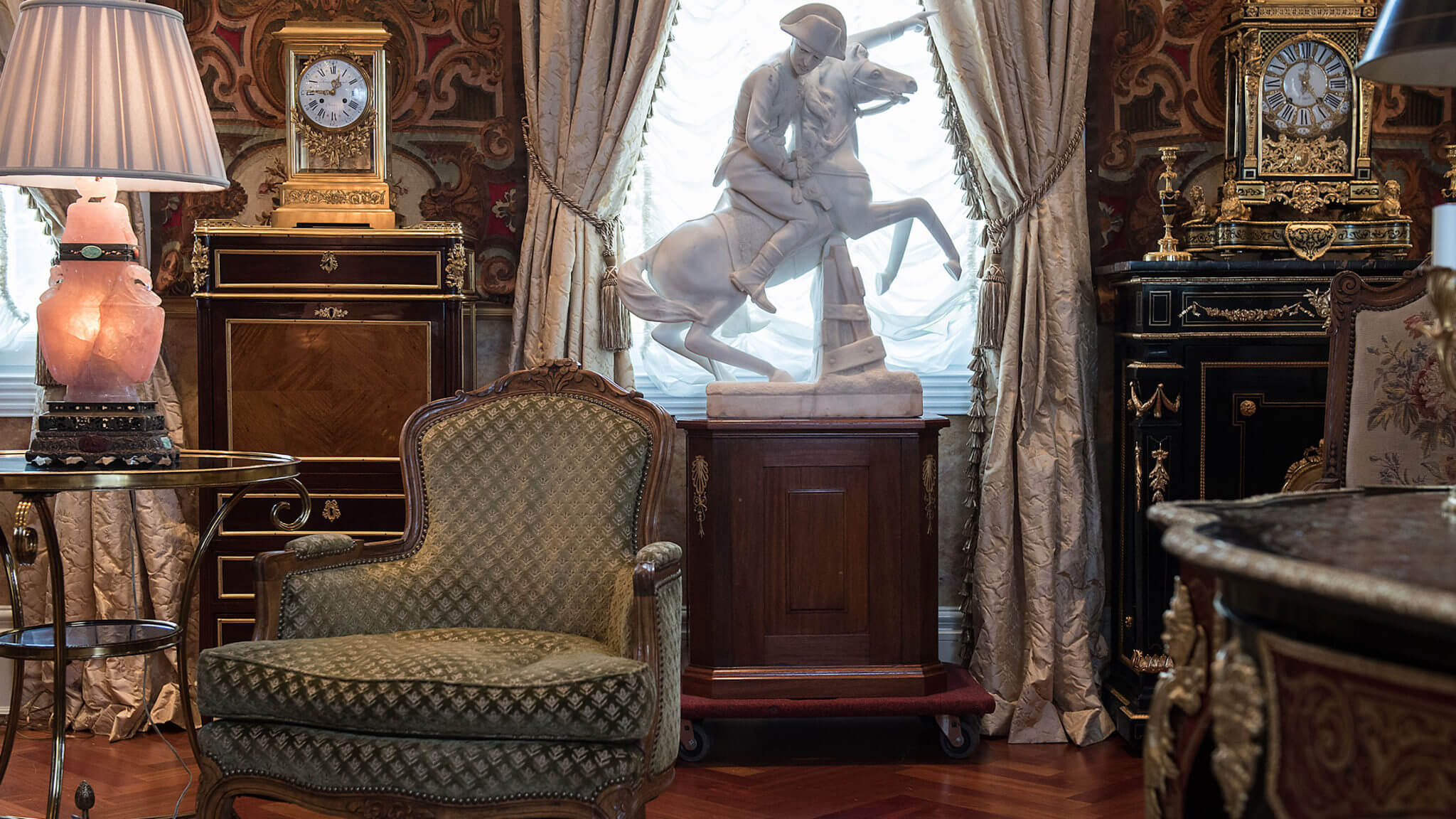
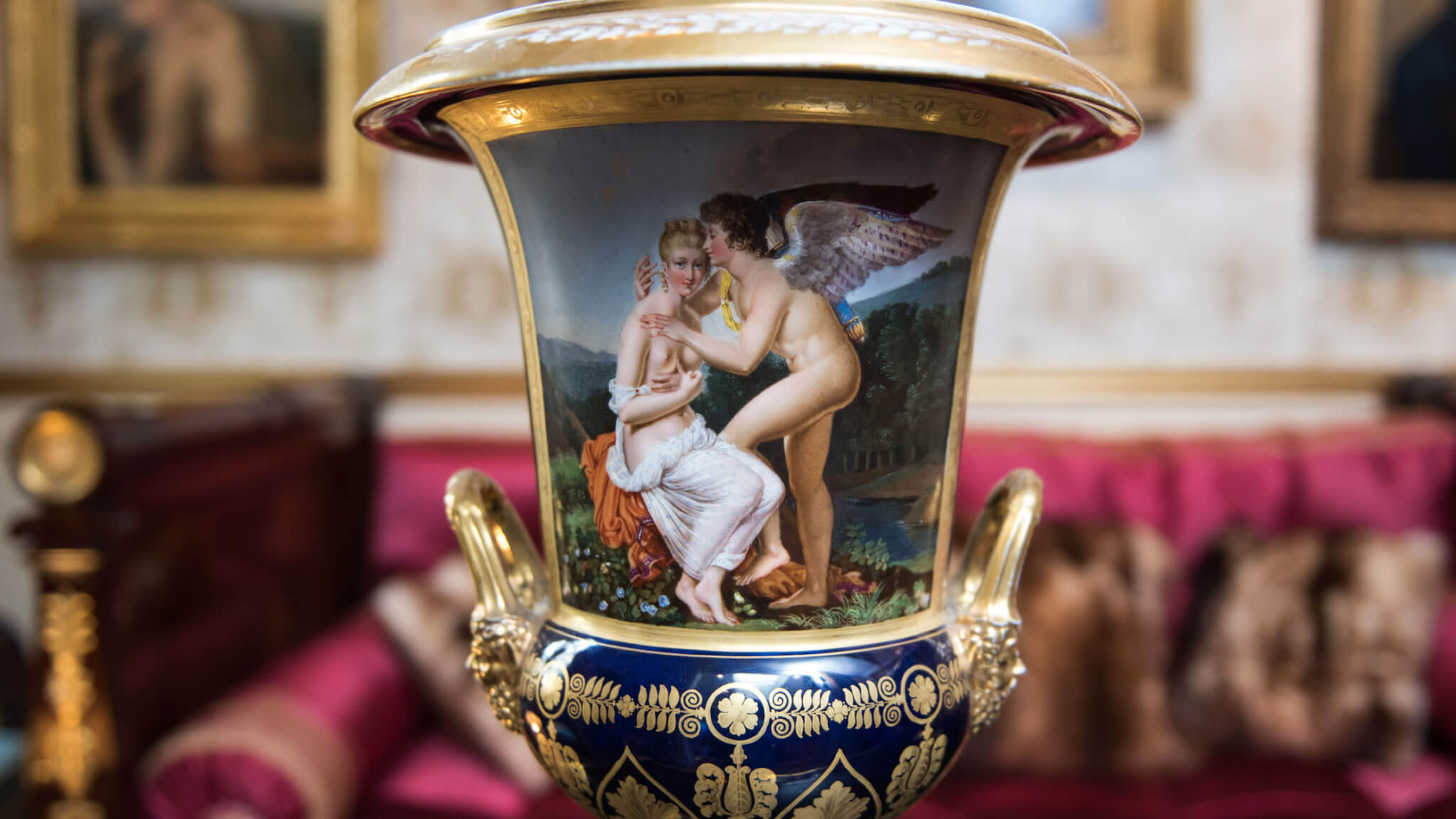
Featured Creators


